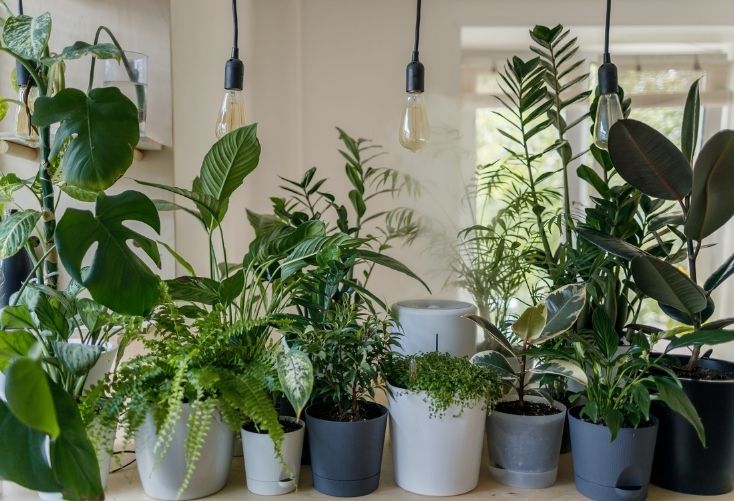- People spend most of their time in manufactured spaces that are not always designed with wellbeing in mind.
- Biophilic design incorporates natural elements into nearly all aspects of these manufactured environments.
- With workers spending more time indoors, studies show Biophilic design can improve productivity and reduce stress.
Biophilic design aims to improve our wellbeing by strengthening our connection to nature in manufactured environments such as hotels, retail spaces and offices.
It’s an approach that’s utilised, championed and still being developed by those specialising in buildings – from the people who design and build them to those of us who inhabit them.
The concept from which ‘biophilic design’ originates – ‘biophilia’ – was coined by the psychoanalyst Erich Fromm in the ‘60s to describe our innate desire to connect with nature.
We spend around 90% of our time indoors, so the urge many of us feel to bring elements of the natural world inside is understandable.
Biophilic design is proving popular in offices, and not just because it looks good.
A study that took place in two commercial offices in the UK and The Netherlands revealed that offices with plants made staff 15% more productive than ‘lean’ ones devoid of greenery.
Even the global corporates are getting on board:
- Amazon introduced spherical conservatories to its Seattle headquarters
- Microsoft debuted treehouse conference rooms in Redmond, Washington
- Facebook created a 3.6-acre rooftop garden at its Silicon Valley hub
Our desire to reconnect with nature
In pre-industrial times, our lives were way more aligned with nature’s rhythms and cycles.
The food we ate, for instance, was seasonal and depended on the weather.
Our working day would revolve around natural light – as it still does for some workers in the farming industry. Daylight had a larger impact on our sleep patterns too.
Today, most people live in urban areas. The majority of our time (90%, as mentioned) is spent indoors, away from the natural environment.
During the first pandemic lockdowns, when many of us started spending even more time indoors, we began to feel the disconnect between nature and our “self” more acutely.
Which is why a growing number of us have been taking steps to reconnect with nature.
Some people have taken up gardening or go on regular walks in the countryside. Others have decided to bring a bit of the outdoors into their homes/ workspaces.

The best biophilic design is multisensory
Some people associate biophilic design with office plants.
But plants – whether they’re free standing ones or entire living walls – should be one aspect of a much wider multisensory approach.
“It’s about bringing nature in all its forms – including patterns, materials, shapes, spaces, smells, sights and sounds – into urban design on varying scales,” explained Jana Söderlund, scholar and author of The Emergence of Biophilic Design, in a BBC Worklife article.
“A lot of it is common sense because we’re innately and evolutionarily hardwired to respond to nature,” she added. Let’s take a closer look at some of these multisensory elements:
1. Natural light
Natural light supports the body’s circadian rhythm; the internal process that regulates our sleep-wake cycle and repeats every 24 hours – or thereabouts.
Optimising natural light indoors is crucial for our health and wellbeing.
Windows, roof lights and glass doors can help facilitate natural light, as can the strategic positioning of desks and other office furnishings.
Of course, it’s not always possible to achieve the levels of natural light we need, which is where circadian lighting comes in.
Like daylight, circadian lighting aligns people’s natural biorhythms. It creates an artificial ‘sunrise to sunset’ that travels through illuminance levels and colour spectrums.
According to the multidisciplinary engineering firm, Hoare Lea:
“The thinking is that, by providing appropriate-intensity blue-spectrum light during main daylight hours and warmer spectrum when the body is gearing up or winding down, you create a suitable environment for melatonin suppression (alertness) and cortisol release to control body temperature.”
2. Colour
The inhabitants of a built environment can also forge connections with the earth through colour, so long as the colours in question, according to Söderlund, have a “healthy nature”. Think lush greens, light blues and plant-esque browns, for example.
“You don’t want to use colours that are indicative of dying plants, like an orangey-yellow hue. Look outside the window and think to yourself how you can bring those colours inside.”
It’s no secret that colour can affect our mood and performance at work. Research shows that green can boost our creativity and warm yellows or reds can improve our attention span.
Meanwhile, art and architecture that feature fractal patterns can reduce stress. A fractal is a kind of pattern that is often seen in nature, including in trees, clouds and leaves.

3. Sound
Sound absorbing solutions like moss walls, acoustic panels and aco flooring panels can help dampen commercial ambient sounds (such as phones ringing, loud footsteps and people talking on Zoom), and make us feel more at one with the quietude of nature.
A study by The National Trust found that listening to woodland sounds a minute made people feel 30% more relaxed and their anxiety levels dropped.
Would playing recordings of natural sounds have a similar impact?
You be the judge…
4. Movement
Interacting with objects that are in constant yet unpredictable motion can have a positive effect on our blood pressure, heart rate and sympathetic nervous system – the part of the nervous system that controls the fight or flight response.
With this in mind, you might want to consider including things that move in your workspace; a fish tank perhaps, or plants outside your workspace window that sway in the breeze.
5. Smell
Smell factors into biophilic design too.
Various aromas from the natural world are thought to boost productivity and reduce stress. The scent of lemon, for example, is believed to promote concentration, and lavender helps control emotional stress.
Oil diffusers are sometimes used in biophilic design. They break down essential oils into tiny molecules before dispersing them into the air.
6. Sustainable materials
Natural materials that are sustainably sourced (and synthetic recycled/repurposed ones) play a huge role in biophilic design. Materials such as cork, environmentally certified wood, vulcanized rubber and bamboo are proving particularly popular at the moment.

Claire Gaudion, a retail partner at ufurnish.com, creates rugs, fabrics and furnishings inspired by nature and predominantly made from natural fibres and repurposed materials. She views our relationship with nature in the context of biophilic design as symbiotic.
In an interview with i, she explained:
“Biophilic design might well be described as ‘nature looking after us’. “Hand in hand with this, sustainable design is about ‘us looking after nature’. Since we began in 2013, we have been committed to working as sustainably and responsibly as possible.
“The construction industry accounts for around 40 percent of the UK’s entire carbon footprint. This is a huge statistic to be a part of, and while it is encouraging to hear the discussion around sustainability is growing louder and louder, we all need to act and take responsibility.”
In November, Allwork.Space wrote about the importance of low embodied carbon workspace design. Decision makers should consider not only where they’re sourcing materials from and how they’re manufactured, but what will happen to them when the tenant moves out.
Will the object in question go straight to landfill, be used by someone else or be repurposed into something new?
Biophilic design’s role in the future of work
While the appetite to create greener buildings isn’t new, biophilic design is always evolving, and workspaces that embrace all aspects of biophilia – including from a sustainability perspective – are still quite rare.
As we head into a more environmentally conscious future, biophilic design will go from being a “nice to have” to a “must have”.
There’s a strong environmental incentive to go green, but there’s also a commercial one.
Our expectations are changing: people will only return to the office if they want to be there, not because they have to be there (because in many cases, they don’t). Multisensory, amenity-rich and sustainable workspaces are the ones most likely to win our hearts.


 Dr. Gleb Tsipursky – The Office Whisperer
Dr. Gleb Tsipursky – The Office Whisperer Nirit Cohen – WorkFutures
Nirit Cohen – WorkFutures Angela Howard – Culture Expert
Angela Howard – Culture Expert Drew Jones – Design & Innovation
Drew Jones – Design & Innovation Jonathan Price – CRE & Flex Expert
Jonathan Price – CRE & Flex Expert














